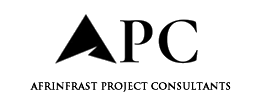
Speaking with SFG20, Dame Judith calls for a culture of competence, rigour and accountability – and urges professionals to make and stand by their expert decisions
Dame Judith Hackitt : “You can delegate the work, but you can never delegate the accountability”
I’d like to begin by discussing some of the findings from the Phase Two report of the Grenfell Tower Inquiry, which revealed truly shocking details. For example, the CEO of the Tenant Management Organisation failed to disclose areas of non-compliance with the Fire Safety Order, inspection and maintenance regimes related to fire prevention systems did not reflect best practices and were applied inconsistently. Additionally, the organisation’s sole fire assessor had fabricated some of his qualifications.
My question is: how can professionals in the facilities management industry prevent similar failures and ensure that their building maintenance is both safe and compliant?
I think one of the key issues here is ensuring the competence of the people you engage. That’s not a completely unfamiliar concept. In many areas of our broader health and safety regime, anyone performing high-risk tasks in industry, particularly the duty holder or accountable person, is required to ensure they employ someone competent to do the job.
For me, that’s where this all begins: making sure you’re using people who know what they’re doing, ask them to demonstrate and prove their competence.
What’s also linked to this is the need to ensure that the products used in both maintaining and constructing buildings are properly assured as well.
One of the significant gaps we still need to address, and which the government has committed to resolving in its response to the inquiry, is the issue of construction products and how they are tested. I believe this is critically important.
You’ve previously mentioned that the fire safety sector isn’t as mature or well-developed as other areas of engineering, such as structural engineering. Why do you think that is, and what do you believe needs to be done to address it?
I believe it is partly the responsibility of professional bodies to ensure that individuals are properly accredited to carry out the work. I’ve been quite critical of some of these bodies for their lack of rigour in verifying that those they certify and provide continuing professional development (CPD) are genuinely competent.
However, the other side of that is this: not only do professional bodies need to improve the quality and credibility of their accreditation, but organisations also need to take responsibility. They must recognise the importance of competence and avoid the mistake of employing anyone who claims to be a fire engineer without thoroughly verifying their qualifications and capabilities.
What do the enhanced fire safety obligations mean for maintenance professionals?
Personally, and I’m not trying to downplay this, believe me, I genuinely believe that what we’re doing here is ensuring that people carry out the responsibilities they should always have been fulfilling. I don’t see this as a significant shift in terms of new duties or standards. The issue we’re addressing stems from people not performing properly in the past. You’ve mentioned examples from Grenfell, and ultimately, our aim is to ensure that people do the job they should have been doing all along.
We’re now starting to see penalties imposed on those responsible for buildings that fail to meet the new fire regulations. For example, two directors were recently fined over £100,000. They were responsible for four care homes that had defective or missing fire alarm systems, damaged fire doors, and outdated fire risk assessments.
Do you think building owners and landlords fully understand their responsibilities and the risks they carry?
I find it hard to believe that they don’t. The real question is: why haven’t they taken their responsibilities seriously enough?
To me, we’re treating this as if new responsibilities have suddenly been placed on them, when in fact we should be focusing on their appallingly cynical attitude towards the people they had a moral duty of care for all along, long before any new regulations came into effect.
Do you think building owners are aware that they are accountable for the maintenance carried out in their buildings, or do they believe that by outsourcing the work, they are also outsourcing the risk?
If they think that, then I honestly can’t explain why, because I’m not aware of any system that works that way. If you’re the owner, you are responsible and accountable. You can delegate the work, but you can never delegate the accountability.
To me, it’s very simple. I’m a homeowner, I can bring someone in to do the work, but if they do a poor job, then I’m partly to blame for not having done the proper due diligence in finding the right people, absolutely.
What can happen to building owners if their building is not maintained in a compliant manner? As I mentioned earlier, fines can be imposed. Are those fines capped, or are they unlimited? Could non-compliance even result in imprisonment, for example?
I don’t think we’ve yet seen the full extent to which the penalties can truly bite.
It’s important for people to remember that this isn’t solely driven by the powers regulators have. That said, we’ve undoubtedly raised the bar significantly in terms of the penalties that can now be imposed by the new regulator.
However, when cases reach the courts, the question becomes, as you’ve just described, how a judge will interpret the situation. And let’s not fool ourselves, the outrage people feel following Grenfell, and everything that has come to light since, particularly regarding the failure of individuals to uphold their moral responsibilities, is likely to result in a very harsh view of those who continue to display cynical attitudes towards the people in their care.
Some buildings, such as hospitals, fall outside the scope of higher-risk buildings as defined under the Building Safety Act for the occupation phase. However, what are their responsibilities under the Fire Safety Order?
I think, rather than focusing on what’s included or excluded, this is really about a change in attitude. Although hospitals may not currently fall under the scope of the Building Safety Act in the occupation phase, we all know that, over time, there is potential for the definition of high-risk buildings to evolve.
Whether that changes or not, the underlying philosophy remains the same: the higher the risk in a building, the greater the effort required to understand the safety case for that building and its occupants.
That principle applies universally, and, frankly, we all assume that it already does. After all, going into the hospital is stressful enough without having to worry about whether there’s a proper fire safety strategy in place. Can we trust that we’ll be safely evacuated in the event of a fire? We take that for granted, we assume it’s already been addressed.
I’d like to move on to the principle of the golden thread, which means that building information management should be structured, traceable, accurate, and held digitally. Would you advise all commercial building owners and managers to adopt the golden thread approach?
Oh, absolutely. I find it quite extraordinary, the extent to which this sector, which we call the built environment (though whether that’s the best definition is debatable), lacks proper record-keeping and stored information. Not just about what was built, but how it was built, what its limitations are, what the fire strategy is, what the design philosophy behind the building was, and so on.
I just find it remarkable that this information often doesn’t exist. In any other sector, whether it’s chemicals, which is where I came from, or manufacturing in general, they can trace everything. They know the limitations of their products, how things perform, and what they’re capable of.
So it’s absolutely a case of catching up with what we all assumed was happening, but in fact, wasn’t. And if we’re going to do that in the 21st century, for goodness’ sake, let’s not do it on paper. Let’s do it digitally.
Finally, the government has recently announced plans to introduce regulations aimed at improving fire safety. What do you think these are likely to cover?
This will cover a number of important issues. As I’ve already mentioned, one of the major challenges we still need to address is the fitness for purpose of the materials we use. Fixing that system is no small task. It will require a significant amount of work, as well as a shift in behaviour from a wide range of people, particularly those who supply construction products.
Anyone who has read the public inquiry will understand why this is essential. It also highlights the need for responsibility on the part of those purchasing these materials, whether for new builds or existing structures. They must ensure they specify the correct materials from the outset and avoid accepting substitutes unless they are confident the alternatives are truly equivalent. That, in itself, is a major issue.
We’ve also come to realise that certain long-accepted practices need to change, staircases, for example, how we ever ended up with single staircases in so many high-rise buildings is difficult to understand, and thankfully, that practice has now been stopped.
There are many incremental changes happening. While they may feel small in isolation, I recognise they represent significant challenges in practice. The key point is that we need to start viewing buildings as systems. We should ask: what are the best ways to improve the overall fire safety of a building?
We need to move away from binary debates, such as whether we should install sprinklers or not, and instead make informed assessments. What is the most effective way to enhance the fire safety of this particular building? You have several options available. You’re the expert, make those decisions, issue your recommendations, and stand by them.
SFG20’s full interview with Dame Judith Hackitt can be found here: https://www.sfg20.co.uk/interview/dame-judith-hackitt/fire-safety
The post Fire Safety: Dame Judith Hackitt reveals harsh realities for facilities management industry appeared first on Planning, Building & Construction Today.

